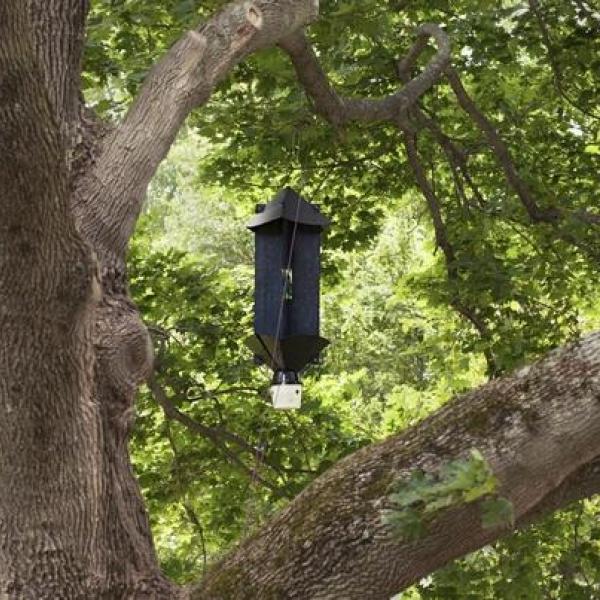
News Source
WORCESTER - Good news on the Asian longhorned beetle front: Surveys of traps hung across Worcester County this summer have turned up only one of the pests in the city, where an infestation of the tree-killing insects was centered, and none in the region beyond.
This suggests that efforts to stop the spread of the beetle are paying off, according to a state forester involved with the campaign to eradicate the insect locally.
A thousand traps were hung across Worcester County this summer to provide an early warning system for any spread of the wood-boring beetle that has forced tens of thousands of infested trees in Worcester and surrounding towns to be felled.
The infestation has been centered in a 110-square-mile territory encompassing the city of Worcester, West Boylston, Boylston, Shrewsbury and portions of Holden and Auburn. Federal and state restrictions have been placed on the transportation of firewood and lumber in this regulated area.
One-quarter of the traps set this summer were placed within this regulated area, marked in red on a map. The rest - the great majority - were hung outside the red zone, across a territory from Gardner to Groton in the north, to North Brookfield and Sturbridge in the west, to Sutton in the south and to Hopkinton in the east.
"The good news is, we have not found any beetles outside the regulated area," said Tawny Virgilio, ground survey supervisor with the state Department of Conservation and Recreation's Asian Longhorned Beetle Eradication Program in Worcester.
This indicates the beetles have not spread, Ms. Virgilio said.
Plus, only one beetle was found inside the regulated area, in a trap hung in the Lincoln Street area in Worcester, she said.
"The general trend is, every year we're finding fewer beetles in traps, we're finding fewer beetles that homeowners are catching, and we're finding fewer infested trees," Ms. Virgilio said. "So we do believe our efforts to eradicate the beetle are working.
"We're not done with our job here," she said. "We still have to continue to survey the regulated area, and to encourage homeowners to look for beetles and damage from (them). But it is a good sign that we're finding fewer beetles and fewer infested trees."
The traps will checked every two weeks and will remain up until early October. If an Asian longhorned beetle is found in the trap, a survey will be done of trees within 200 meters of the trap to determine if an infestation is present, Ms. Virgilio said.
More than 34,000 trees were cut down in the area following the discovery of the pest in Worcester in 2008. The beetle is believed to have arrived from China in shipping crates.
Ms. Virgilio encourages people to call her Worcester office at 508-852-8090 to report any signs of tree damage that may have been caused by the beetles. Signs include dime-sized exit holes, shallow scars in bark, sawdust-like material on the ground or tree branches, and dead branches.
More information on spotting the Asian longhorned beetle and on the campaign to control it is available online from the U.S. Department of Agriculture at asianlonghornedbeetle.com.